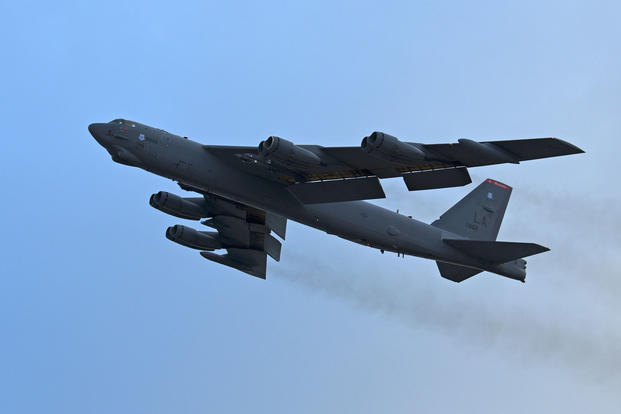The U.S. Air Force never expected to fly aircraft such as the Cold War-era B-52 Stratofortress bomber for as long as it has, much less for another 30 years as it now plans to.
So if the Air Force continues to modernize its legacy fleets in addition to buying new, more advanced equipment and planes, it will need to have more access to technical data and software often owned or operated by industry partners, experts say.
"There is no real process to define what technical data requirements are in major acquisition programs," said Heather Penny, senior fellow at the Mitchell Institute for Aerospace Studies.
Penny and a pair of former top Air Force operations officials debuted their study, "Data Requirements and Rights: Time for a Reassessment," at the Air Force Association headquarters near Washington, D.C. on Monday.
Related content:
- Air Force Creates Office to Help It Shake Up Acquisition Process
- New Air Force Acquisitions Chief Aims to Rid F-35 of Software Glitches
- Senators Want $100 Million for New Marine Corps Light Attack Aircraft
Although the conversation around data rights has been going for nearly 20 years, the issue has gradually become a more common problem.
Assistant Secretary of the Air Force for Acquisition, Technology and Logistics Will Roper recently told DefenseOne the Air Force could do more with 3D printed parts.
But the service doesn't inherently own the rights to manufacture specific components, he said. Nor does it have a surefire way of dealing with that kind of intellectual property.
Taxpayers are paying a high price as a result, he said.
For example, Roper said he could 3D print new toilet seat covers for C-17 Globemaster IIIs at a cost of roughly $300 per seat. But because the manufacturer owns the rights, the service needs to rely on industry to instead produce the item at a whopping $10,000 per seat.
"You'll think, 'There's no way it costs that,'" Roper told DefenseOne last month. "No, it doesn't, but you're asking a company to produce it and they're [busy] producing something else," he said.
The central questions surrounding the issue of data rights are: Who has access to what? And what does the Air Force need to own in order to operate effectively?
It's a dilemma the service and the Defense Department as a whole is likely to keep encountering, the authors said.
"This is much bigger than aircraft," Penny said. "This is about the transition from the industrial age to the information age."
The findings of the study come as the Air Force in recent months has shown interest in expanding the type of data it receives through its contracts, particularly contracts for sustainment, for additional source codes, computer software, blueprints and architecture systems in order to keep up with modernizing its fleets. And there are many moving pieces to the complex puzzle.
Data rights laws have been enacted in most cases to limit dramatic increases in program lifecycle costs should the government seek to acquire data unhelpful to it in the first place.
At the same time, the Air Force doesn't want to limit competition.
"Firms may choose not to participate in future acquisitions, or defense primes may need to acquire small businesses in order to satisfy the government's demands for the data (thereby decreasing competition)," the study said.
The Mitchell paper suggests that because the Pentagon, and particularly the Air Force, has had an inconsistent approach to how it sustains certain programs, it needs to be more transparent in its contracts going forward.
"Acquiring the appropriate data rights during initial contract award is the most cost effective solution for the US government, and sets the right relationship between the contractor and the government," the study said.
"No acquisition is the same, and data rights should not be treated the same across those acquisitions. [But] the Air Force must adapt their acquisition practices and workforce to address their increased need for data requirements and rights," it added.
One suggestion? The experts say standing up a small cadre of Air Force data rights focused acquisition officers to act as liaisons between defense companies and the service may help programs and contracting in the long-term.
"Nothing happens between the government and industry without a contract," Penny said.
-- Oriana Pawlyk can be reached at oriana.pawlyk@military.com. Follow her on Twitter at @Oriana0214.










